Marvel at the magnificent snow-capped mountains, minority cultures, and unique ancient city charm in Yunnan.
Relax on the 5-star Yangtze River cruise sailing through the beautiful Three Gorges and marvel at the world-famous Three Gorges Dam.
Witness the combine of bustling metropolises and ancient history in Shanghai.
Itinerary:
Day 1: Dali Arrival | Airport Pick-up and Hotel Check-in
Nihao! Welcome to Dali,Yunnan. For many years Dali has been a favourite destination for foreign travellers and backpackers, thanks to its laidback atmosphere and spectacular surroundings. There are snow-capped mountains on one side and the vast Erhai Lake on the other, making for an impressive sight. Upon arrival and hotel check-in, enjoy free time exploring the Dali Ancient City area.

Dali Ancient City, located at the foot of the picturesque Cangshan Mountain, was the capital of the ancient Nanzhao Kingdom and Dali Kingdom. The city's streets are laid out in a typical grid pattern and form the core tourist area of Dali. Take a leisurely stroll through Dali Ancient City to slow down your pace and immerse yourself in local life.
Day 2: Tour Around Erhai Lake |Xizhou Ancient Town + Zhoucheng Village
Xizhou Ancient Town,around 23 kilometres north of Dali , is a well-preserved Bai ethnic town that has not been overly developed, making it an ideal place for travelers to stroll or cycle around. The top five experiences in Xizhou Ancient Town include wandering around Sifang Street, viewing ancient Ming and Qing residences, enjoying the pastoral scenery, tasting the local Xizhou Baba pastry, and shopping for Bai ethnic tie-dye products. The town's landmark, Zhuanjiao Building, and the Yan Family Courtyard, a classic example of Bai architecture, are must-sees. The roads and fields outside Xizhou Ancient Town have also become popular spots for photography, especially the fields of rapeseed in spring, rice paddies in summer, and wheat fields in autumn.

Zhoucheng is the largest Bai village in Dali and is renowned for its meticulously crafted tie-dye and embroidery, earning it the title "hometown of tie-dye." In Zhoucheng, be sure to visit the local vegetable market, explore the ancient theater, city gates, and narrow alleyways, and visit Bai-style homes, markets, and workshops where traditional tie-dye techniques are practiced (a recognized national intangible cultural heritage). A hands-on experience with traditional tie-dye is a must, as Zhoucheng is the epicenter of Bai tie-dye artistry.
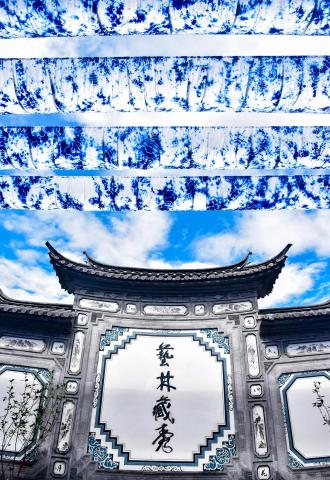
Day 3: Tour Around Erhai Lake, Travel to Lijiang
Enjoy a leisurely tour around Erhai Lake, where you can cycle along the lakeside and fully immerse yourself in the beauty of the lake.Erhai Lake is a highland lake formed by the collapse of the West Er River, named for its ear-shaped appearance. The lake is known for its clear, pristine waters and is often referred to as a "flawless jade between the mountains." It features three islands, four peninsulas, five lakes, and nine bends.

In the afternoon, take a high-speed train to Lijiang (approximately 2 hours ).This World Heritage-listed town is home to the Naxi people, a matrilineal society descended from Tibetan nomads.
Day 4:Lijiang Tour |Jade Dragon Snow Mountain + Lijiang Ancient Town
Jade Dragon Snow Mountain is considered a sacred mountain by the Naxi people. Its main peak rises to about 5,596 meters, and it is often shrouded in clouds. This majestic, unconquered mountain features diverse landscapes, including snowfields, glaciers, alpine meadows, and ancient forests. The mountain's meltwater forms a crystal-clear, refreshing blue lake in the shape of a crescent, known as Blue Moon Valley. On the Blue Moon Valley Plaza, you can watch the large-scale live performance "Impression Lijiang."

Lijiang Ancient Town is one of the most famous towns along the ancient Tea Horse Road, with a history of 800-900 years. The town is characterized by wooden buildings with green tiles, stone-paved streets, and flowing streams, with the Jade Dragon Snow Mountain visible from Dongda Street in the old town. Lijiang is one of the two ancient towns in China that successfully applied for World Cultural Heritage status and is also one of the most distinctive styles of traditional Chinese residential architecture.
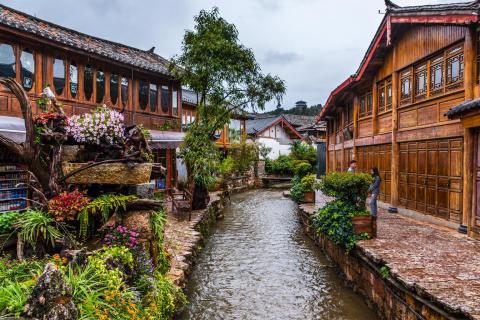
Day 5: Fly from Lijiang to Chongqing, Free Time at Ciqikou, and Boarding for Yangtze River Cruise
After a leisurely morning stroll through the ancient town of Lijiang, you’ll fly to Chongqing. Upon arrival, a bus will transfer you to Ciqikou, where you’ll have free time to explore this historical town. In the afternoon, at 3:30 PM, you’ll head to the dock to board the cruise ship, preparing for your 4-day, 3-night journey down the Yangtze River.
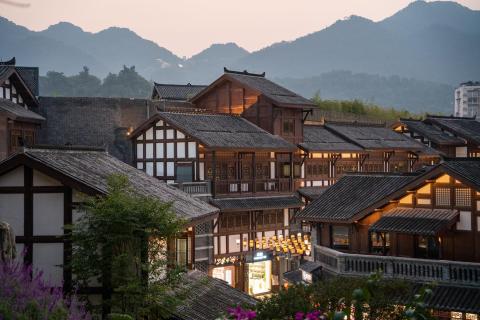
Day 6: Yangtze River Cruise | Fengdu Ghost City + Ming Mountain Scenic Area
The Yangtze River’s Three Gorges stretch from Baidi City in Chongqing to Nanjin Pass in Yichang, forming one of China’s ten most famous scenic areas. This section of the river is renowned for its dramatic landscape, historical significance, and cultural heritage, including sites like Baidi City, Huangling Temple, and Nanjin Pass. The Qutang Gorge, in particular, is known for its steep cliffs and narrow passageways, creating a breathtaking and thrilling experience.
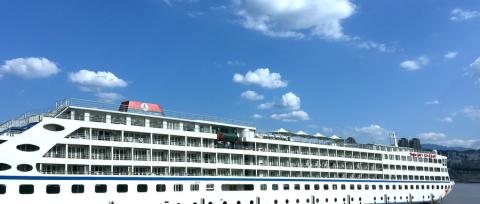
Fengdu Ghost City on Ming Mountain is a famous Taoist site and a 5A-rated tourist attraction in China. It’s known for its ancient architecture and sculptures that depict the afterlife, including the legendary Bridge of Helplessness and the 18 Levels of Hell. It’s an ideal place to learn about Chinese traditional culture and Taoist beliefs.
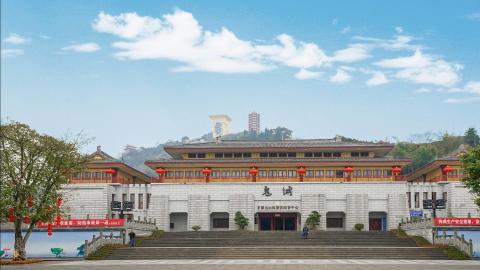
Day 7: Yangtze River Cruise | Wu Gorge + Qutang Gorge + Goddess Stream
Today, you’ll cruise through Qutang Gorge, the shortest and narrowest of the Three Gorges, yet the most dramatic, offering a spectacular display of towering cliffs and rugged terrain.
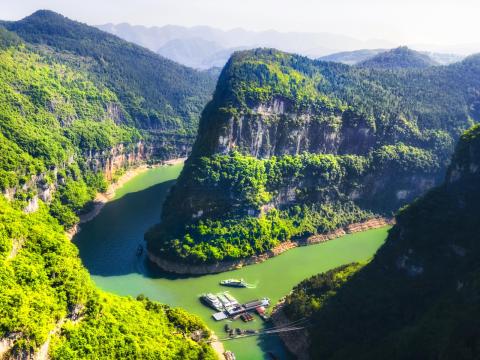
Goddess Stream is a 15-kilometer-long tributary known for its rapid waters, shallow depth, and narrow channels. The first 10 kilometers remain largely untouched by human activity, preserving its original, pristine beauty.
Day 8: Yangtze River Cruise | Three Gorges Dam, Arrival in Yichang, and High-Speed Train to Shanghai
After docking, you’ll visit the Three Gorges Dam, a 5A-rated tourist attraction, and the largest hydroelectric project in the world. From the Tanziling Scenic Area, you can enjoy a bird’s-eye view of the entire Three Gorges Project and feel the majesty encapsulated by the phrase “High Gorge Out of a Flat Lake.” Standing on the 185 Platform, you’ll look down to experience the grandeur and pride of this monumental feat of engineering.
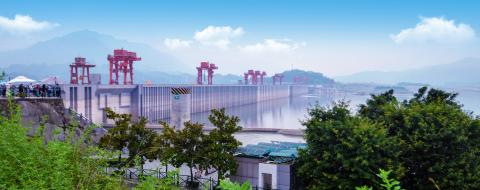
At the Near Dam Viewing Point, you’ll get up close to the awe-inspiring dam, and from the dam top, you can witness the powerful spectacle of water release. Finally, visit the Interception Memorial Garden to admire the perfect harmony between man and nature, immersing yourself in the scenery where mountains, water, and the sky merge together.
Afterward, you'll head to Yichang East Railway Station to board a high-speed train (D954) at 2:06 PM, arriving in Shanghai Hongqiao at 8:21 PM. This marks the end of your Yangtze River cruise and your return journey to Shanghai.
Day 9: Shanghai City Tour|Shanghai Museum + Yu Garden + The Bund + Nanjing Road
The Shanghai Museum is a large museum of ancient Chinese art, featuring 12 specialized galleries and over 120,000 exquisite cultural relics. The museum's collection includes significant historical artifacts from various dynasties, with a particular emphasis on ancient bronzes, ceramics, calligraphy, and paintings. The museum frequently hosts special exhibitions, showcasing domestic and international art and cultural relics.
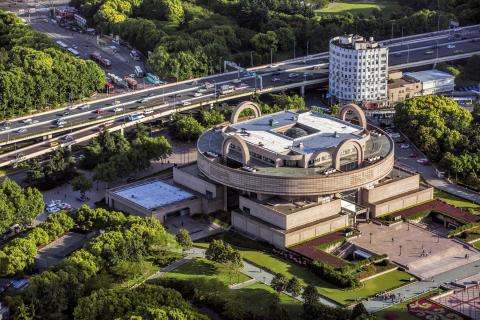
Yu Garden, adjacent to the Shanghai City God Temple and Yuyuan Tourist Mart, is a famous classical garden in the Jiangnan style. The garden, covering about 2 hectares, is renowned for its beautiful pavilions, rockeries, and lush greenery, reflecting the artistry of Ming and Qing dynasty garden architecture. The layout is intricate, with pavilions, halls, and corridors harmoniously integrated, presenting a sense of grandness in a limited space. And you can freely explore the Yuyuan Market next to the garden, is a busy market specializing in traditional Chinese arts and crafts, a good place for souvenirs.
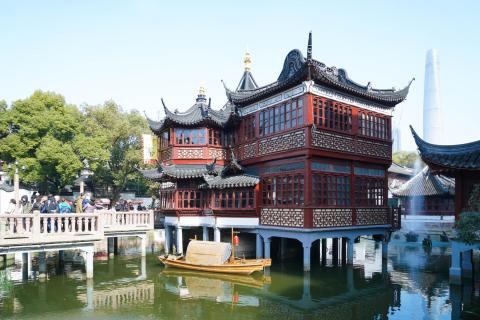
The Bund is a waterfront area in central Shanghai.The Bund features 52 classical revival buildings in various styles, earning it the nickname "A Gallery of World Architecture." The Shanghai Bund on which you can embrace the best cityscape, feast on the rich architectural fashions ( Gothic, Barogue, Rome, Renaissance, Classic and Mixed Eastern and Western style, etc.) and know why Shanghai is glorified as "Paris of the East". Across the river, you can admire the brilliantly lit Lujiazui area and the Oriental Pearl TV Tower, a truly spectacular sight.
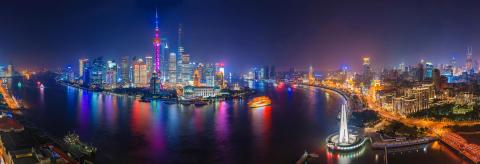
Nanjing Road is Shanghai's busiest and most vibrant commercial pedestrian street, known as "China's No. 1 Commercial Street." It is home to numerous upscale shopping malls, well-known brands, and specialty snacks,as well as famous historical buildings and cultural landmarks.
Day 10: Shanghai City Tour|Zhujiajiao Ancient Town + Oriental Pearl Tower
Zhujiajiao Ancient Town, commonly known as "Jiao Li," is the nearest ancient water town to Shanghai and one of the city's four historical and cultural towns. The town is characterized by its picturesque waterways, arched bridges, and old-world charm, providing a quintessential snapshot of Jiangnan's water town scenery. The most famous landmark is the Release Bridge, the largest stone arch bridge in the Shanghai area with five spans. The town is also known for its variety of local snacks, which visitors can sample while exploring.
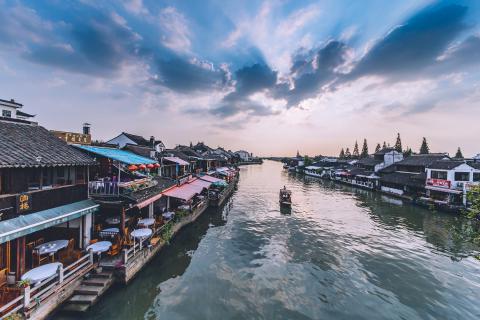
The Oriental Pearl Tower, located on the banks of the Huangpu River and facing the Bund, is one of Shanghai's iconic cultural landmarks. Standing at 468 meters tall, the tower consists of 11 spheres of varying sizes. The revolving restaurant at 267 meters offers a 360° panoramic view of Shanghai's night skyline, making it a perfect spot for dinner. The suspended sightseeing corridor at 259 meters is constructed with steel and glass, allowing visitors to gaze down at the Huangpu River and the entire Lujiazui area, providing a thrilling experience.
Arrive in Suzhou by High-Speed Rail, Check into Hotel and Rest.
Day 11: Classical Gardens of Suzhou + Suzhou Museum + Pingjiang Road Pingtan Performance
After breakfast, head to one of the "Four Great Gardens of China," The Humble Administrator's Garden, which is a UNESCO World Heritage Site. The garden is renowned for its water features, showcasing the beauty of Jiangnan (the region south of the Yangtze River) with its elegant and refined layout. The winding paths, lattice windows, pavilions, and flowing water create a serene atmosphere where each step presents a new, picturesque view.
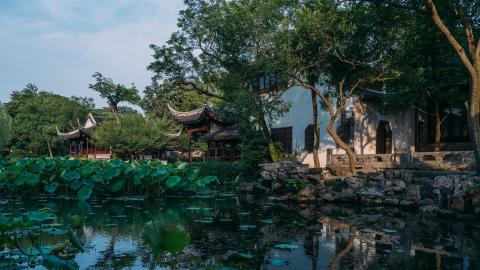
Next, visit the Suzhou Museum, which embodies the traditional Suzhou garden style with its contrasting heights, dark gray roofs, and white walls, resembling a small Jiangnan garden. The architecture blends classical Jiangnan charm with modern artistry, offering a visually captivating experience with every detail. The new exhibition halls display ancient to modern pottery, jade, and paintings, while the old halls feature exquisite Suzhou-style paintings.
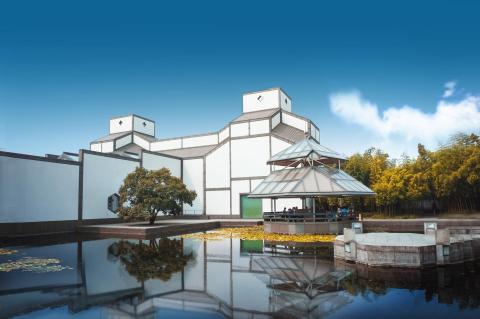
After lunch, take a leisurely stroll along the ancient Suzhou Grand Canal and enjoy a boat ride to experience the cultural richness along its banks. In the afternoon, visit Pingjiang Road, a historic street in Suzhou, spanning approximately 1.6 kilometers. This area is one of the best-preserved sections of the ancient city, representing a microcosm of Suzhou. The east side of the road still retains several water lanes, where water and streets run parallel, showcasing the unique water town characteristics of Jiangnan. You can also listen to a traditional Pingtan (storytelling and ballad singing) performance, which is a recognized intangible cultural heritage. As evening falls, visit Shantang Street, where the glow of lanterns reflects off the white walls and black tiles, creating a picturesque and lively scene filled with the warmth of local life.
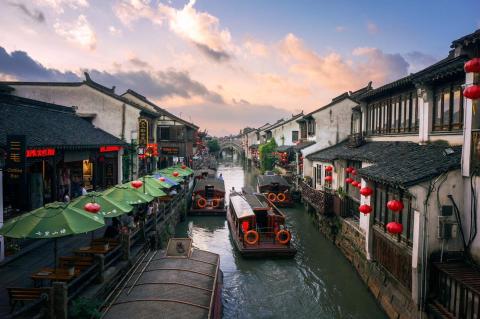
Day 12: Suzhou to Nanjing, Zhonghua Gate + City Wall Museum, Night Tour of Nanjing Confucius Temple and Qinhuai River Scenic Area
Take the high-speed rail from Suzhou to Nanjing. After checking in at your hotel, visit Zhonghua Gate and the City Wall Museum in the afternoon. This is the largest existing ancient city wall in the world, built during the Ming Dynasty as a defense against foreign invaders. Its historical, aesthetic, archaeological, and architectural value is a remarkable feat, comparable to the Qin Dynasty's Great Wall. The inscriptions on the bricks testify to the grandeur of the Ming Dynasty and the 600-year history of Nanjing.
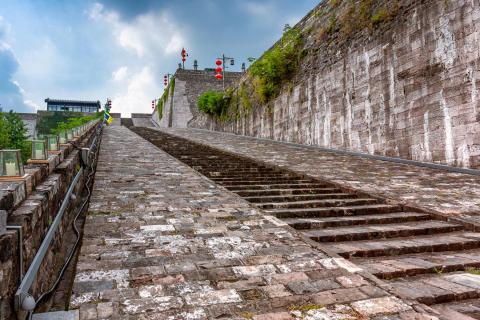
In the evening, enjoy a night tour of the Nanjing Confucius Temple and Qinhuai River Scenic Area. The temple complex, which includes the Confucius Temple, the Imperial Academy, and the Examination Hall, is a large and impressive group of ancient buildings. The Qinhuai River, known as the mother river of Nanjing, is scenic, and you can take a boat ride on the river to experience the dazzling Qinhuai lanterns, fully immersed in the bustling atmosphere of local life.
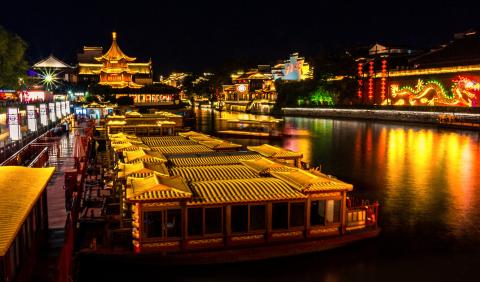
Day 13: Sun Yat-sen Mausoleum + Ming Xiaoling Mausoleum + Nanjing Museum
After breakfast, head to Purple Mountain to visit Sun Yat-sen Mausoleum, the final resting place of Dr. Sun Yat-sen, the pioneer of China's democratic revolution. It is known as the "First Mausoleum in the History of Modern Chinese Architecture," with a complex of buildings built along the mountain. The Music Stage at the mausoleum is known as a supremely calming place where you can see doves taking flight and feel at peace.
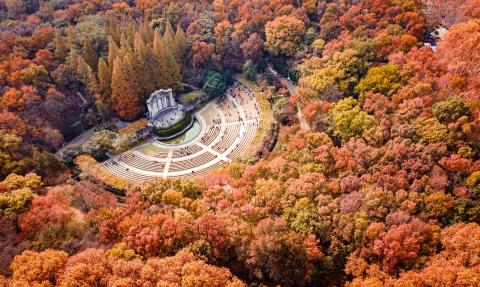
Next, visit Ming Xiaoling Mausoleum, a UNESCO World Heritage Site, known for its grandeur. It is one of the largest imperial tombs in China, featuring the most beautiful 600-meter-long Spirit Way in Nanjing, adorned with yellow-glazed tiles, red doors, and walls.
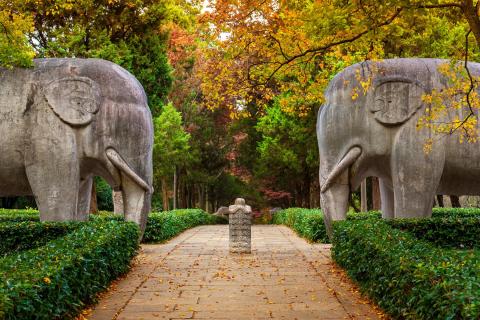
In the afternoon, explore the Nanjing Museum, one of China's top three museums and the oldest museum in the country. It comprises a History Hall, Art Hall, Special Exhibitions Hall, Digital Hall, Republic of China Hall, and Intangible Cultural Heritage Hall. The Special Exhibitions Hall features the "Splendid Times" section, showcasing Qing Dynasty imperial porcelain, and the "Clock and Watch Exhibition," displaying ancient Chinese timepieces and Western clocks, which are incredibly impressive.
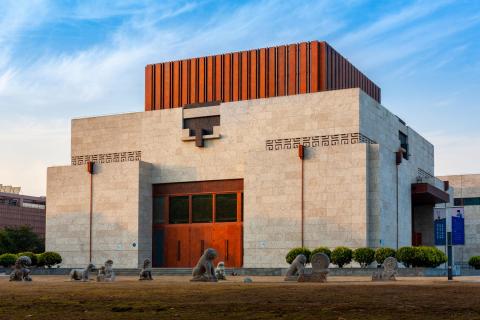
Day 14: Return Journey
Enjoy free time in Nanjing before departing for your return journey.





